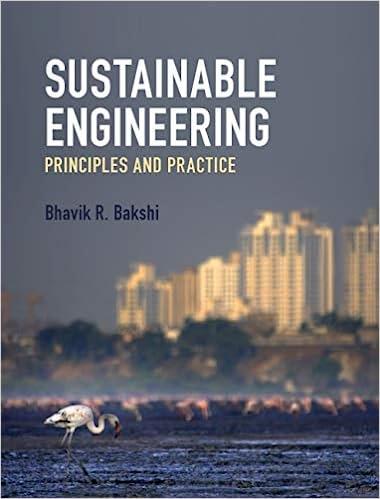Process 1 produces P, Q, and R. The masses of P, Q, and R are 100 kg,
Question:
Process 1 produces P, Q, and R. The masses of P, Q, and R are 100 kg, 20 kg, and 5 kg, respectively, and their monetary values are $1000, $100, and $20. This process emits 500 kg of CO2. Process 2 produces P and S with masses of 100 kg and 5 kg and monetary values of $1000 and $0. This process emits 1000 kg CO2. Process 3 produces 1 kg of S with CO2 emission of 0.8 kg. Choose the process for producing P that has the lowest CO2 emission by using
1. Mass-based allocation
2. Monetary allocation
3. Displacement and mass-based allocation
4. Displacement and monetary allocation
Fantastic news! We've Found the answer you've been seeking!
Step by Step Answer:
Related Book For 

Sustainable Engineering Principles And Practice
ISBN: 9781108420457
1st Edition
Authors: Bhavik R. Bakshi
Question Posted:





